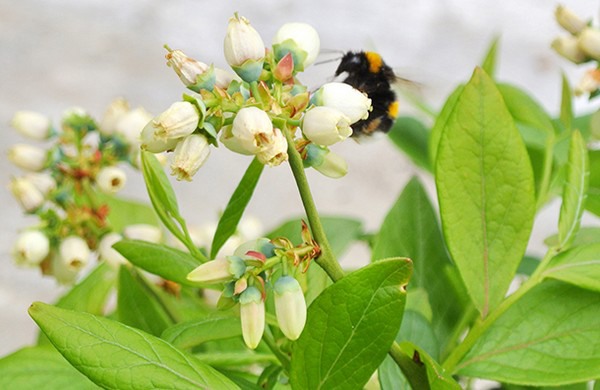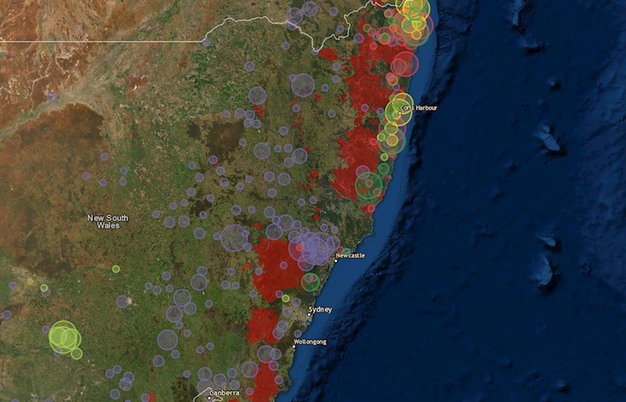The Australian protected cropping industry is at an extremely exciting point in its history, says Nicky Mann. As the chair of the board of Protected Cropping Australia and one of the Managers of Family Fresh Farms, she lives and breathes horticulture every day of her life. Over the last couple of years, she has seen how the industry grows and professionalizes. Protecting their crops, whether it is from massive weather events or from pests and diseases, has a great priority for growers to help them serve the rapidly growing market.
Glasshouse grown crops
Over the last five years, the Australian horticultural industry has been in rapid growth across many sectors. “Growers of many horticultural commodities are considering some type of protection over, around, or under their crops like netting, hydroponics, the use of substrates, plastic tunnels, retractable greenhouses, multi-span greenhouses, high-tech glasshouse or even indoor vertical farms. Already there is a farm in New South Wales growing avocadoes under retractable greenhouses,” Nicky says.
Especially soft fruits such as blueberries and raspberries, almonds, avocados, citrus, and glasshouse grown crops like tomatoes, cucumbers, capsicums, and eggplants have increased in production, especially snacking tomatoes, snacking cucumbers, and snacking capsicums. “But there is also ginger, turmeric, dragon-fruit, figs, cherries and many more horticultural crops that were traditionally grown outdoors coming under netting, plastic covers etc. and thus, tissue culture, propagators, and the young-plant nurseries had to grow accordingly and became a lot more sophisticated and mechanized.”
Also, there has been a surge in Medicinal Cannabis production in Australia, “and during COVID the garden and nursery industry including flower production has literally bloomed in growth, which is amazing after many years of tough trading in this sector.”
Fresh produce market
According to Nicky, there are multiple causes for the growth. “Consumers are definitely more aware of the health benefits of fresh fruit and vegetables - and the incredible increase in consumption of products like blueberries, avocados, and almonds were a direct result of marketing campaigns of the health benefits of these particular products. Consumers just went wild about blueberries especially, and so everyone jumped into planting blueberries, especially under tunnels and in substrates to harvest crops quicker to meet the surging demand for this high antioxidant fruit, which was also returning incredible profits for growers. However, the supply has vastly improved in Australia for blueberries, and the prices have come down - so growers now need to become more efficient and push their growing and viability to new heights.”
She adds how the market in Australia is a little behind Europe, “but there is a push towards more fresh fruit and vegetables being value-added for more convenience for the consumer, and there is more focus on healthy snacking, tasty and easy to prepare salads, and meals using fresh produce. However, the vast size of our country also adds a layer of complexity with transport distances being massive and getting produce to markets and/or consumers can sometimes take days to arrive, and thus the selection of varieties to grow needs to take this into consideration.”
Australia has also focused on export to Asia - which is close by - in the past 5 years. “With large populations that are getting richer on our doorstep, there is a lot of opportunity for Australia and New Zealand. In fact, a lot of work has been done to ensure we are producing the types of products that those countries and their consumers want and need. ”

Making most out of your crop
With the market growing, growers want to protect their crops in the best possible way, which is where the greenhouse industry comes in. “There’s more consideration by all growers to consider protection of their crops from massive weather events like fires, hail, floods and droughts - Australia seems renowned for these extreme weather events. Growers were becoming tired of losing crop after crop, year after year - so change had to happen.”
At the same time, Australian growers are trying to mitigate risks from pests and diseases. “Australia, in the past, has been fairly isolated. However, we are not so fortunate anymore and have had a number of exotic pests and diseases reach our shores. Fair Trade Agreements have allowed the flow of horticultural products onto our shores, which has put our bio-security at risk and found the cracks to infiltrate our states and farms. Outbreaks of exotic pests like the serpentine leaf miner in the Greater Sydney Basin is causing a lot of growers stress and heartache, as there are but few chemicals registered for it, and they may not be utilizing IPM strategies yet to combat it. We are seeing exotic pest incursions happening more frequently, which is a constant worry for our growers. The adoption of netting, plastic covers, tunnels, retractable structures, multi-span greenhouses, and obviously high-tech glasshouse production can assist in mitigating risks from pests, diseases, birds, wind, hail, and rain.”
Labor issues
Then there is the labor issue, resulting in growers opting for smaller labor forces. “For example, a casual level 1 (entry-level) employee in the Horticultural Sector nowadays must earn a minimum of $25.41 per hour, but the actual cost to the employer is about $31 per hour once all on-costs are calculated. This has made farmers in the horticulture sector in Australia consider automation and super-efficient ways of utilizing labor, which in many organizations is 65% of their total costs. Therefore the adoption of new ways of training orchard trees, setting out orchards, planting fruiting walls, and being able to use machinery as much as possible has surged in the last 5 years to increase labor efficiency and get away with smaller labor forces than in times gone by.”
She adds that intensive protected cropping systems, especially high-tech glasshouses are incredibly good at maximizing labor efficiency: “Scissor lifts, harvest trollies, driver-less vehicles (Bogaert Bees) in the glasshouses, stacking and palletizing machinery from suppliers like TAKS and excellent packing machinery in the packhouses.”
“Growers understand that consistency in quality and quantity is imperative and vital for good, healthy relationships with the supply chain, including the supermarkets which are requiring all-year-round supply of produce. Growers are aiming to fill the supply gaps or peak pay-back price periods which is usually when supply is made out-of-season or the shoulders of peak production periods. These are the nice "sweet spots" of great profitability and all these benefits can be reached by the use of protected cropping - where climate, nutrition and crop manipulation can be controlled or optimized for best results.”
Healthy horticultural sector
All in all, Australia is in a good position with a very healthy horticultural sector that is increasing in size, sophistication and automation. “By 2030, Australian Agriculture is aiming to be a 100 billion dollar industry (they are at just over 70 billion now) and so Australian Horticultural has got to be prepared accordingly to contribute their share to this target in the next 8 years. "So there is still lots of room for improvement and efficiency across the board.”
The growing market results in an increase of ‘Corporate/Investor’-type businesses. “Companies from outside our sector and sometimes even from abroad have invested large amounts of money into the establishment of horticultural operations including large, sophisticated, and organized enterprises which are designed to have incredible returns on investment. This has changed the landscape with some companies even being listed on the stock exchange, going global and making a worldwide impact with their systems, genetics, and knowledge, indicating that there are great prospects for the Australian horticultural sector.”
One thing Nicky is sure of is that as an organization Protected Cropping Australia needs to be there to support their new growers with knowledge, training, and various forums to help disseminate knowledge and experience. “The existing protected cropping growers in Australia are doing well and kicking amazing goals. I see growers starting to dip their toes in the water with maybe 1-5% of their crop under protection and slowly transitioning more and more crops under protection, like an insurance policy to ensure they reap what they sow and keep their market share. I see more and more corporate-style businesses entering this sector, as the production of clean-green food is going to be essential with increasing future populations and with protected cropping being a secure and reliable return on investment. With precious resources like water, nutrients and energy becoming scarce, this is also the ideal way to go forward in a more sensible and less wasteful way.”

The mapping project of the protected cropping sector in Australia
For example, PCA is supporting the UNE mapping project of the protected cropping sector in Australia. “This data will give accurate figures of the size, scale, and detail of our industry in Australia, so that we can get the attention from government to support our growth in the future. We are also determined to get the Greenhouse Construction Code officially recognized by the Australian Building Code to accept our structures as unique and requiring different treatment than other factories or buildings, which will vastly help our members get through the red-tape, reduce time and costs to get new projects approved and operational. Lastly, concentrating on training and upskilling our labor force to operate and run these food-producing protected cropping systems is essential to adequately equip our country for the future of food production.”
For more information: Protected Cropping Australia
Protected Cropping Australia
[email protected] www.protectedcropping.net.au
